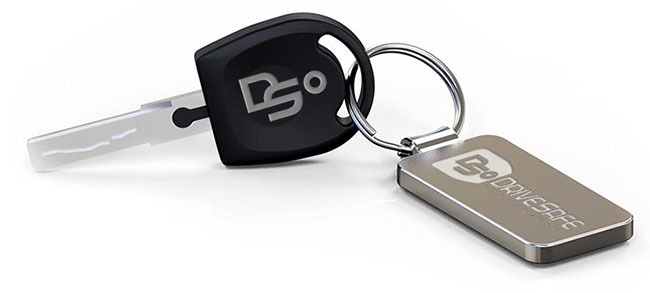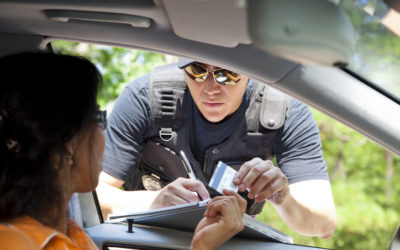The Yellow Road Lines Explained
Is there anything worse than getting stuck behind someone who is driving well below the speed limit?
Outside of the fact that this is one of the most annoying driving habits in the world, there are some studies that have suggested driving too slow could be as dangerous as driving too fast. It’s why you should make it a point to try and pass a person if they’re driving slower than they should be in front of you.
Before you get frustrated and pass a slow driver, though, it’s important for you to glance down at the lines on the road, especially the yellow road lines located in the center of the street. These pavement markings are designed to let you know whether or not it’s safe for you to pass someone who is in front of you.
From a single broken yellow line to double solid yellow lines, there are lots of yellow road lines that you might see in the center of the road. Learn more about what each of them means below.
To Start, On Which Streets Will You Find Yellow Lines?
Before we talk about some of the specific yellow road lines that you’ll find on different streets throughout the country, it’s important for you to know what kind of street you’ll be on if you spot these road markings. They’re obviously not found on all types of streets.
.

DRIVESAFE ONLINE DEFENSIVE DRIVING COURSES
Easy to Complete. Receive an Insurance Discount. Money-Back Guarantee!
Mobile-friendly viewing
Fully narrated video with closed captioning
Intelligent bookmarking to start/stop when you want
99% passing rate on user’s first attempt
Certificate emailed immediately after completion
Only $24.95
1-HOUR
6-HOUR
Yellow road lines are primarily used on two-way streets and run right down the center of the road more often than not. There are some instances in which you’ll find them running along the side of a road (more on that towards the end). But for the most part, they’ll be in the middle of the street and are meant to divide the two separate lanes of traffic traveling in opposite directions.
Yellow road lines are in place to alert drivers on two-way streets as to when they can pass people in front of them and when they need to stay put. You’ll want to keep a close eye on these lines when you’re driving down a street with them and keep them to the left of you unless you’re passing someone. You’ll also want to look out for changes in yellow road lines and abide by what they’re telling you.
Single Broken Yellow Line
When there is a single broken yellow line running down the middle of a street, this is a best-case scenario for drivers on both sides of the road when it comes to passing other drivers. This yellow line means that people are free to pass other people if they wish to do it.
If there is a single broken yellow line in the center of a two-way street and you want to try and pass someone, you should look on the other side of the street to make sure no cars are coming in the opposite direction.
As long as the coast is clear, you should then put your left turn signal before crossing the line on to let others know you’re pulling onto the other side of the road before moving over into the left lane, passing the car in front of you, and returning to the right lane.
It’s very important for you to leave yourself more than enough time to make this maneuver. You should not attempt to pass someone if you see another car coming quickly in your direction in the other lane. You could end up causing a head-on collision if you do this.
Double Solid Yellow Lines
If you’re someone who spends a lot of time passing other drivers out on the road, you’re going to love the sight of broken yellow lines. They’ll allow you to pass other drivers whenever you get stuck behind someone who is driving too slow.
Double solid yellow lines, on the other hand, are going to be your arch nemesis. They’re going to let you know that you’re not allowed to pass other drivers under any circumstances.
In fact, they’re going to let drivers on both your side of the road and the other side of the road know that passing is not permitted. You’ll usually find double yellow lines in areas where there are a lot of curves in the road that could make it unsafe for people to try and pass one another.
If you see a double yellow line that is solid on both sides, stay put for the time being. You don’t want to put yourself or others into danger by trying to pass someone in this situation.
One Solid Line and One Broken Line
 Now that you know the answer to the question, “What do double yellow lines mean?”, you might think you know everything there is to know about yellow road lines. But there is another set of double yellow lines mark that you should know about when you’re out on the road.
Now that you know the answer to the question, “What do double yellow lines mean?”, you might think you know everything there is to know about yellow road lines. But there is another set of double yellow lines mark that you should know about when you’re out on the road.
There are some scenarios when you’ll see two yellow lines in the middle of the road—with one being a solid yellow line and the other being a broken yellow line. This can create confusion in those who have never encountered these yellow road lines that seem to be sending conflicting messages.
But these double yellow lines aren’t as complicated as they might look. If you’re on the side of the road with the solid yellow line on it, it means you aren’t allowed to pass. And if you’re on the side of the road with the broken yellow line on it, it means you are allowed to pass.
The one thing that can throw some people off is that these double yellow lines will sometimes switch places as you travel down the road. A solid yellow line will turn into a broken yellow line and vice versa. It’s why you need to keep your eyes peeled and pay attention to the yellow road lines at all times.
Solid Yellow Line on the Left Side of the Road
As we alluded to earlier, there are some rare times when you’ll spot a solid yellow line on the left side of the road. Seeing a yellow road line in this position might confuse you at first.
But when a solid yellow line is on the left side of the road with a solid white line on the right side, it usually means that you’re driving on a divided highway. The yellow line is there to let you know that a median or divider is in place to separate two lanes of traffic, your side of the road from the one with cars traveling in the opposite direction.
Broken Double Yellow Lines
You might notice broken double yellow lines in areas where traffic can get heavy at certain times of the day. For example, you may see this pavement marking on roads near large manufacturing plants. Early in the morning and later in the day these roads can fill with vehicles as workers go to or leave from work.
To help reduce congestion and move traffic along faster, streets with double broken yellow lines allow traffic to become reversible. So, where four lanes typically allow two lanes of traffic to travel in each direction, the double broken lines allow drivers to use all four lanes to drive in the same direction during certain times of the day.
The manufacturing plant employees may use all four lanes between 6-7 a.m. to drive toward their plant, and then use the same lanes to travel away from work between 3-4 p.m. Between those specific times, traffic on the road reverts back to normal flow with two lanes of cars traveling in each direction.
Keep Tabs on Yellow Road Lines When You’re Driving Down the Street
Once you have enough driving experience under your belt, you won’t have too much trouble at all reading the yellow road lines that you’ll find on many streets. You’ll instinctually know whether or not you can pass other drivers based on which lines are running down the middle of the road.
But at first, it can be confusing keeping up with yellow road lines. Use the guide found here to get a better understanding as far as what the lines mean and what you should do when you see them. It’ll help you avoid accidents and traffic tickets that could come about as a result of you not knowing what yellow road lines mean.
Want to do even more to keep yourself safe when you’re out on the road? Take a defensive driving course designed specifically for drivers in your state. It can turn you into a better driver and help you if you ever receive an auto insurance rate increase, get a traffic ticket, or have to take a court-ordered defensive driving class.
Other posts you might enjoy:
We Believe in Nashville
Our thoughts are with all those in Nashville and across the great state of Tennessee affected by the recent tornadoes. The safety of our DriveSafe Online family, customers and partners is our primary concern. Tennessee Governor Bill Lee called for residents to stay...
Child Passenger Safety Regulations: A State-By-State Guide
Your State-By-State Guide to Child Passenger Safety Regulations Child passenger safety regulations are in place because a leading cause of death for children, one in every four, is driving-related accidents. Each one of these deaths is a terrible tragedy, but you may...
Will A Speeding Ticket Affect My Insurance?
By Patrick Mileham DriveSafe Online Contributing Writer Speeding tickets are part of your driving record so they may increase the amount you pay for insurance. That’s the bad news. The good news is there are several factors that must occur to actually trigger a rate...
Your Road to Savings

Patrick M. is Editorial Director for the always expanding DriveSafe Online library of courses. With over two decades of experience developing award-winning training, he now focuses on innovating online driver safety training. Pulling from his background in journalism, he steers the wheel behind the creation of top-tier content that promotes a better journey—whether on the digital highway of learning or the real roads we travel every day.


